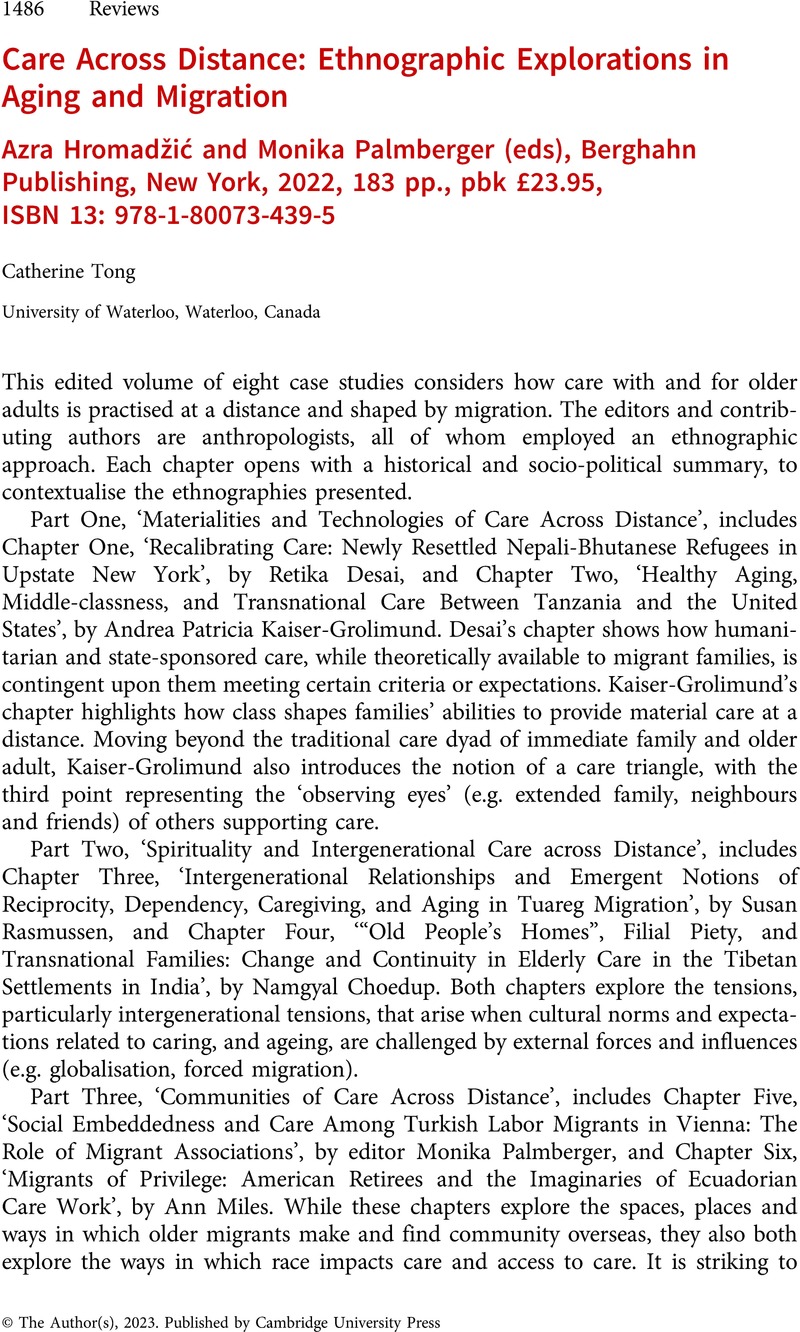No CrossRef data available.
Article contents
Care Across Distance: Ethnographic Explorations in Aging and Migration Azra Hromadžić and Monika Palmberger (eds), Berghahn Publishing, New York, 2022, 183 pp., pbk £23.95, ISBN 13: 978-1-80073-439-5
Review products
Care Across Distance: Ethnographic Explorations in Aging and Migration Azra Hromadžić and Monika Palmberger (eds), Berghahn Publishing, New York, 2022, 183 pp., pbk £23.95, ISBN 13: 978-1-80073-439-5
Published online by Cambridge University Press: 27 February 2023
Abstract
An abstract is not available for this content so a preview has been provided. Please use the Get access link above for information on how to access this content.

- Type
- Reviews
- Information
- Copyright
- Copyright © The Author(s), 2023. Published by Cambridge University Press


